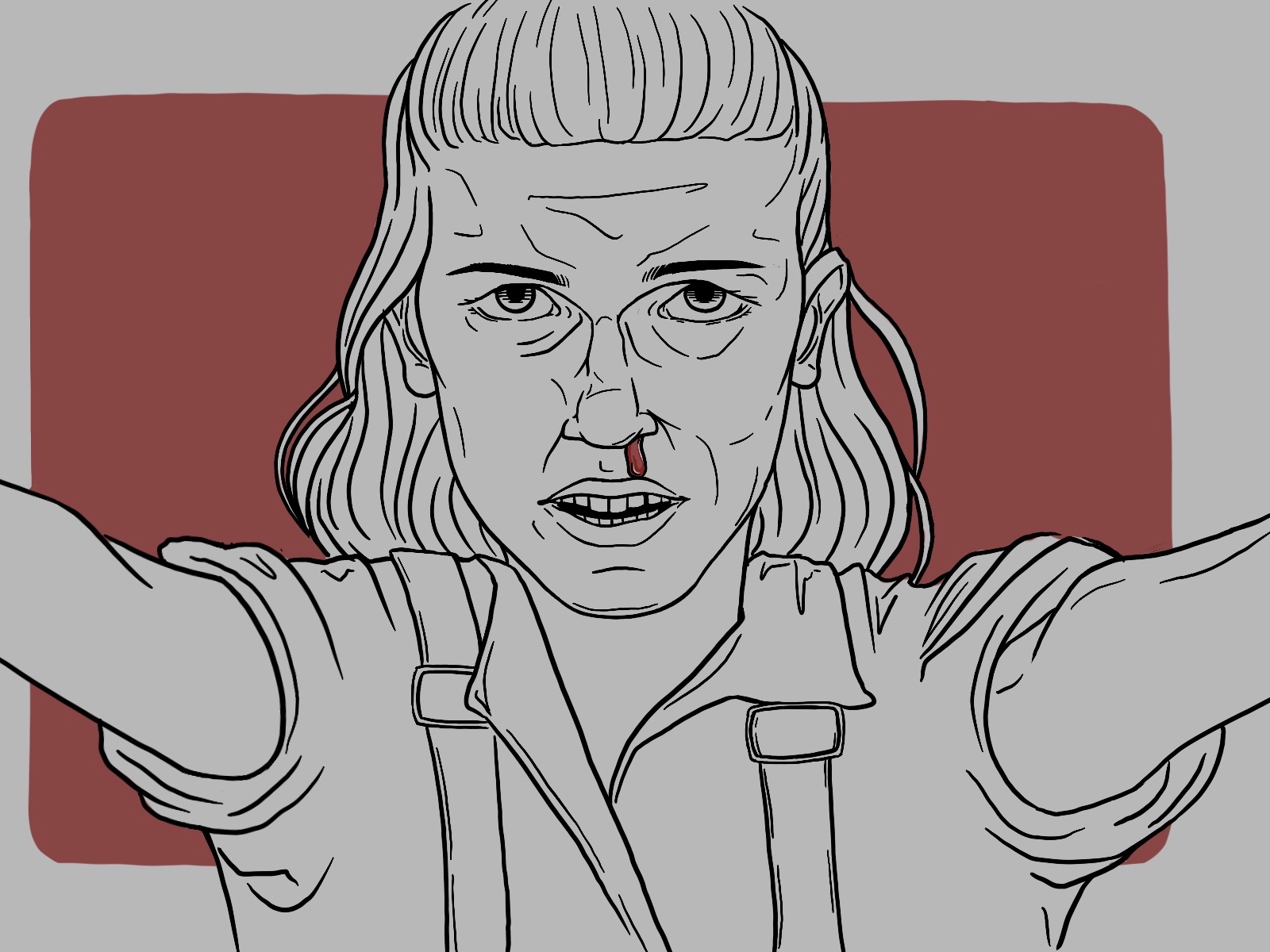As summer approaches its halfway mark, there are still plenty of shows fit for binge-watching for those who aren’t fond of the summer heat. Along with other trending summer shows, Season 3 of the Netflix megahit “Stranger Things” is one to definitely have on a watchlist.
To decide whether or not “Stranger Things” should be at the top of your to-watch list, here are the highs and lows of the newest season.
Best Visual Effects
The third season outshines prior seasons in the special effects and makeup department, effectively evoking the season’s dark and horrific tones. While Seasons 1 and 2 delivered adequate visuals of the Upside Down, Demogorgon and Demodogs, Season 3’s visuals, especially of the Mind Flayer’s latest incarnation, captures the true essence of what dwells in the Upside Down.
If the show isn’t afraid to dip their toes deeper into the realm of horror, “Stranger Things” could expand upon their target audience from lovers of 80s nostalgia and Dungeons and Dragons to hardcore fans of fantasy, science fiction and horror.
With an improvement on the visuals implying growth in the series’s budget, hopefully, the show’s future is bright and leads to the creation of more seasons for fans to see what the show’s creators, the Duffer Brothers, have in store for them.
Most Emotional Season
Even though “Stranger Things” is known for having themes of teenage romance and more childish problems, the new season broadens its horizons by focusing its attention on more mature emotions in the face of real-world, adult issues.
As the cast members grow older, so do the characters they portray. Some characters, like Nancy (Natalie Dyer) and Jonathan (Charlie Heaton) who are now working as interns at the local newspaper, want to enter adulthood and pursue dreams that are unattainable while stuck in childhood. On the other hand, characters like Will (Noah Schnapp), who has spent most of the series either trapped in the Upside Down or possessed by the Mind Flayer, refuses to adapt to change and wants to remain firmly entrenched in his childhood and playing D&D with his friends, who have become more like his family.
PLEASE SOMEONE FOR THE LOVE OF GOD PLAY D&D WITH WILL THE WISE pic.twitter.com/hjCAImQOpg
— Stranger Things (@Stranger_Things) July 10, 2019
The deep, emotional discussions throughout the season don’t come close to the series’s most touching moments seen in the season finale. As long as a certain character’s fate remains true in future seasons, Season 3’s ending delivers a heavy impact on its viewers that may cause some eyes to moisten.
Every Character Has a Chance to Shine
The new season rightfully provides its characters with equal amounts of screen time, not only aiding in character development but also allowing the actors the chance to portray their characters to the greatest extent possible. Even newer characters like Billy (Dacre Montgomery), Max (Sadie Sink) and Robin (Maya Hawke) get a chance to prove themselves as important players in the story and not just bystanders in supporting roles.
When it comes to series regulars, Hopper (David Harbour) and Joyce (Winona Ryder) stand out, thanks to Harbour and Ryder showing a fresh side to their characters who have otherwise grown stale. Hopper’s role as a father figure to Eleven (Millie Bobby Brown) is the perfect scenario ripe for dad jokes and comedic moments associated with Hop’s newfound protective nature.
Hopper’s new, energetic and humorous personality is accentuated by Joyce’s new vigor and strength, which she puts to use toward any man who thinks she’s feeble or complacent.
While some may think Harbour and Ryder’s new portrayals of Hopper and Joyce are out of character, they received a well-deserved revitalization, resulting in a fulfilling conclusion.
Great Finale & Cliffhanger
The season finale ended in such a way that, if it wasn’t for the post-credits scene, it would’ve made for a great series finale. Every character’s journey throughout the season concludes with no loose ends, and while some characters seem to be moving on to a brighter future, they’d be futures better left to a viewer’s imagination than seen on screen. But since Season 3 did have a post-credits scene, it’s likely the future won’t be bright after all.
With the Duffer brothers already discussing Season 4 of “Stranger Things” with Entertainment Weekly, the post-credits scene teases the return of a familiar “face” from Season 1 as well as another unknown character provoking lots of discussion among fans. The scene also teases the possibility of the series growing in scope from Hawkins, Indiana to other countries, opening the door for “Stranger Things” to potentially shift into an anthology series.
No New Lore about the Upside Down
After 25 episodes, “Stranger Things” hasn’t offered viewers a lot of information regarding what exactly the Upside Down is. While the lack of details serve to add mystery to the series and keep viewers hooked, it’s disappointing that nothing new has erupted to prolong or add to the mystery.
Keeping audiences in the dark is an appropriate tactic for shows in their infancy; however, after having built a decent enough fanbase, the show should reward viewers with more details for the time they invested to keep them satisfied until the next season drops.
Tonal Imbalance
Despite the inclusion of chilling and disturbing visuals shifting the show’s tone for the better, “Stranger Things” doesn’t yet know how to combine the strange with the familiar. Because the show emphasizes character relations more than the supernatural threats posed to them, the threats never seem to bear any weight.
While the Mind Flayer and other antagonists visually appear to be menacing, they are easily (though not too easily) taken down by Eleven and the others. Even though the antagonists do cause some changes in the characters’ lives, the changes don’t necessarily alter who they are as people.
Because “Stranger Things” is a combination of several tones (scary, comedic, serious and playful, among others), a good method to separate them would be to ensure that scenes of differing tones don’t overlap or happen right after each other so as to not confuse the audience. Where the first season succeeded in this method, Season 3 fails to follow it this time around.
A notable example of different tones overlapping includes scenes towards the end of the season where the protagonists are trying to defeat the Mind Flayer. The scenes are tense as Hopper, Joyce and Dustin (Gaten Matarazzo) race against time to stop the Mind Flayer from killing other members of their group.
What starts as a fast-paced, high stakes scene suddenly turns into a musical, where Dustin and his new girlfriend sing the theme song of “The NeverEnding Story.” As catchy and well-performed as the song was, it nevertheless interrupts the suspenseful scenes happening concurrently and fails to suspend an audience’s disbelief.
https://www.instagram.com/p/Bzv9KIalbKj/
Besides a couple of flaws, “Stranger Things’” Season 3 is the most emotional and visually pleasing season yet. While Season 1 remains the best, so far, Season 3 is a great addition to the series and deserves to be on everyone’s summer watchlist.
















